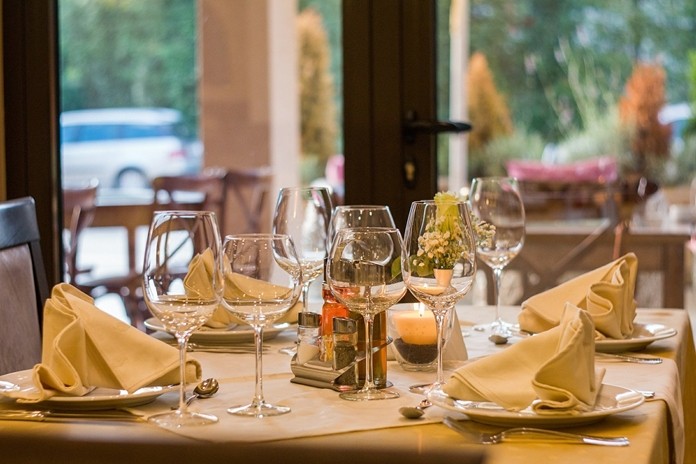
A few months ago, before the Days of the Great Pandemic, I was having an evening meal with some friends at an Italian place in Bangkok. There were several wines on the table including a bottle of Cabernet Sauvignon. Towards the end of the meal, someone ordered a desert, a kind of Italian apple and lemon pie with lashings of cream. To my astonishment he reached for the Cabernet Sauvignon, poured himself a glass and then happily swigged it with the desert. I assumed that a fuse must have blown in his gustatory system for the disastrous combination of dry, tannic wine, sweet apples, lemon and cream would have tasted revolting. The flavours must have been fighting each other to the death.
You probably know of several food and drink combinations that just seem that they don’t work. Could you for example, imagine eating a fried egg with a glass of rich, fruity Merlot? The thought makes me cringe. There might be a remote possibility that fried egg and Merlot is a taste made in heaven just waiting to be discovered but I somehow doubt it. Some wine enthusiasts claim that you can drink champagne with fried eggs because the acidity in the wine cuts the palate-coating taste of yolk. But it would just feel wrong. To my mind, the only successful partner to a fried egg is a cup of tea.
Food and wine have been close companions for centuries, because generally they go together so well. But there are a number of combinations that simply don’t work largely on account of the chemistry. Wine is expensive enough, without wasting a good bottle on the wrong food. It could ruin the evening. The whole business of food and wine pairing might seem like a minefield, but it boils down to a simple fact: you need the wine and the food to complement each other so that they both improve in each other’s company.
In a restaurant, choose a wine that fits your budget. And play it safe rather than risk a dodgy experiment with the unknown, especially if the unknown costs Bt 3,000 a bottle. I usually prefer to keep things simple with three rules of thumb: (1) match the weight and texture, (2) match the intensity, and (3) either contrast the flavours or let them complement each other.
If you were to drink a young white with a rich and fully flavoured beefy dish, the wine would probably taste thin and watery. Delicate flavours of fish dishes need a light, delicate wine. A hefty full-bodied red would overpower the food completely and render it pretty well tasteless. Even so, there’s no point in drinking dry-as-a-bone Sauvignon Blanc with lightly cooked shellfish – a classic combination by the way – if you loathe and detest Sauvignon Blanc.
And talking of fish, you may recall that much-quoted saying, “white wine with fish; red wine with meat.” It’s an over-simplification of course. Some light reds work well with rich, assertive fish dishes and many whites work well with veal or chicken. While some reds take on an unpleasant metallic quality when paired with fish, grilled salmon works really well with Pinot Noir. Some of the classic food pairings, tried and tested over generations are worth bearing in mind: Chablis or Muscadet with oysters; red Burgundy with coq au vin; Cabernet Sauvignon with steak; Sauternes with foie gras and Chardonnay with lobster. If you can afford caviar, bring out the Champagne.
For many of us, food choices are rather more mundane. What about fish and chips for example? You might be surprised to know that Champagne goes well with this British favourite, or Prosecco if you’re on a budget. My own choice would be Sauvignon Blanc or Pinot Grigio though I’ve heard that Chenin Blanc goes a treat with mushy peas.
For beef burgers, chose Pinot Noir or a fruity Merlot. Hot dogs go well with a cold fresh dry rosé or even a spritzy white. Veggie omelets complement light dry whites like Chablis or Soave but more robust omelet fillings need a simple country red. Indian food generally calls for low alcohol wines and Riesling, Sauvignon Blanc or Gewürztraminer are appropriate choices.
Thai food generally works well with light dry whites such as Pinot Grigio, Soave, Chenin Blanc or dry rosé. Leave the reds on the shelf. The choice of wine with chicken depends on how the meat cooked, but generally rich dry whites or light reds work well. Pinot Noir is the classic wine choice for duck.
Wine and cheese have long been traditional partners but there’s a persistent myth that cheese will go with almost any red wine. I disagree. Full-bodied reds and soft cheese (such as Brie or Camembert) don’t work because the tannins make the cheese taste chalky. Dry, crisp whites are far more suitable. Save the red for richer items. Riesling and Chardonnay usually go well with Swiss cheese. Riesling also works well with two popular Dutch cheeses, Gouda and Edam. British mature Cheddar can be a problem, and I’ve read all sorts of suggestions that range from Californian Zinfandel to late-bottled Port. My own preference, especially for a summer lunch, would be a cold beer.
 |
 |
 |





